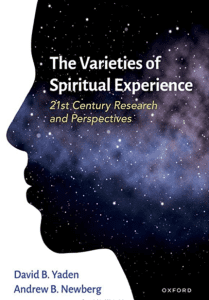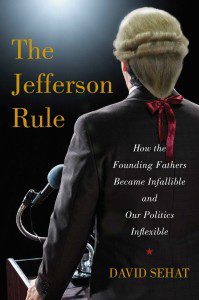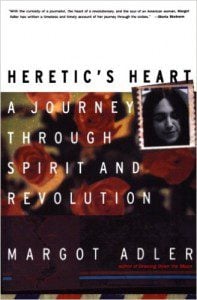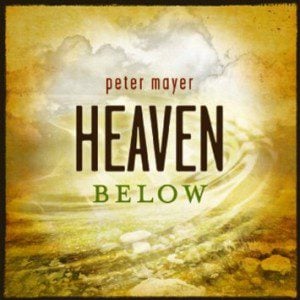This post is the final entry in a four-part series on Unitarian Universalist history.
In part one, I explored the question, “Why Unitarianism?” The Unitarian half of Unitarian Universalism emerged out of the Protestant Reformation in the 1500s, and has roots stretching back to the beginning of the Jewish and Christian traditions. And, in short, my answer to “Why Unitarianism?” is that its foundation in six diverse sources makes it a religious movement that is particularly suited for the pluralistic, postmodern world in which we find ourselves in the early twenty-first century.
In part two, we turned to the question, “Why Universalism?” The Universalist half of UUism traces its origins to the 1700s in North America and England, as well as to early influences going back to the beginning of the Christian tradition. And whereas Unitarianism has sometimes led down a road to extreme Emersonian individualism, Universalism is about moving our of any particularity (including our own narcissism!) into universal relationship with all life. And although Universalism began with the teaching of universal salvation for all (as a rejection of the idea of a hell in a “next world”), it has evolved into a call to love the hell out of this world.
Last week, in part three on “The Secret Six,” I reflected on the history of nonviolent activism as well as the history of calling for the use of violence when deemed justified in Unitarian and Universalist history.
As the capstone to this series, I would like to explore the combined question “Why Unitarian 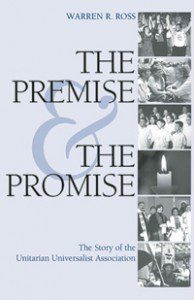 Universalism?” And from the perspective of today, more than fifty years have passed since the 1961 merger of the American Unitarian Association with the Universalist Church of America. Accordingly, for those of us who have only known the consolidated Unitarian Universalist Association, it can be unclear how and why UUs came to have a very long, ten-syllable name.
Universalism?” And from the perspective of today, more than fifty years have passed since the 1961 merger of the American Unitarian Association with the Universalist Church of America. Accordingly, for those of us who have only known the consolidated Unitarian Universalist Association, it can be unclear how and why UUs came to have a very long, ten-syllable name.
I have previously shared the famous joke about the difference between Unitarianism and Universalism: “The Universalists think that God is too good to damn them forever, the Unitarians think that they are too good to be damned forever” (Buehrens 228). Underneath that joke is the tension that there was a significant class divide between the Unitarians, whose ministers tended to come from a Harvard-educated upper-class, and the Universalists, whose ministers were frequently brilliant and charismatic, but often will little formal higher education.
But as early as the late 1850s — more than a century before the eventual consolidation — there were initial talks about a Unitarian-Universalist merger with the leadership of the two movements recognizing that what kept the two groups apart was “social” differences (Robinson 169-170). At the same time, what continued to draw the two groups together was that they were both theologically liberal.
And in the nineteenth-century, theological liberalism primarily meant a rejection of Calvinism. The most famous overview of what Calvinism entails uses the acronym T.U.L.I.P.:
Total Depravity (meaning that because of humanity’s Original Sin, we are totally depraved. There is nothing we humans can do to save ourselves, so we must rely on God’s grace alone)
Unconditional Election (being part of the saved/elect has nothing to do with humans meeting any condition; again, the choice and actions is totally up to God)
Limited Atonement (Jesus’ death on the cross was only for the elect, not for all humanity)
Irresistible Grace (the elect cannot resist or reject salvation from God)
Perseverance of the Saints (also known as “Once Saved Always Saved”)
I’ve taken the time to briefly describe Calvinism because, as I’ve been exploring in depth in a recent class on “Comparing Religions” in the congregation I serve, the best way of understanding almost anything is by comparison and contrast. As the saying goes about both languages and religions, “To know one is to know none” — that is, you don’t really understand even your own religious tradition until you have another one to compare it with. Likewise, I began to understand English grammar at a much deeper level when I began studying German, a common phenomenon that happens with learning a second language. Again, “to know one is to know none.”
In that vein, as with almost all human endeavors, Unitarianism and Universalism were not born in a vacuum. In particular, Unitarian and Universalist forebears learned to articulate what they aspired to be and do in opposition to Calvinism:
- Instead of “Total Depravity,” they taught the “inherent worth and dignity” of every human being. (That tenant remains the UU First Principle.)
- Instead of “Limited Atonement,” they taught that God’s love is for all. (That teaching was the basis of Universalism.)
- Instead of “Unconditional Election,” “Irresistible Grace” and “Perseverance of the Saints,” they emphasized the human freedom and human responsibility — that how we human use our free will matters and can change the world.
Over time, the Unitarians and the Universalists were brought together even more strongly as their theologically liberal rejection of Calvinism evolved into a robust religious pluralism that came to see the Christian tradition not as “The One” best religion, but as one valuable religious tradition among many others (169).
And although we know now how the story ends, if we take a step back and consider the century-long movement from the opening intimations in the late 1850s to the final consolidation in 1961, part of what kept the Unitarians and Universalists apart was the centrality of Liberal Christianity in Universalism and the growing strength of a science-based Humanism within Unitarianism. Indeed, there was a real possibility for a while of the Universalists moving in a more traditional direction to merge with Congregationalists, the progressive Christian denomination we know now as the United Church of Christ (172).
What eventually led the Universalists further leftward theologically toward to the Unitarians was that the Universalists were rejected in 1946 when they submitted an application to join the organization known today as the National Council of Churches (Howe 108-109). At the same time, there was a growing movement within Universalism to claim the full promise of that word “universal” as about recognizing the universal kinship of all human beings in this world and moving toward a universal world religion, drawn from many sources (111-112).
Nevertheless, the merger between the Unitarians and Universalists was almost derailed at the last minute by a controversy over a line in the proposed Purposes and Principles that referred to “our Judeo-Christian heritage,” which was problematic for individuals who did not identify with this heritage. This debate was in the midst of a five-hour joint session in which “nerves became frayed, and there were ‘frequent moments of great tensions’ and ‘intense differences of opinion’” (123). The day was saved when the more mutually agreeable language of “the Judeo-Christian heritage” was suggested (Robinson 174). This resolution showed, in the words of one historian, that “Unitarians had moved beyond their theist-humanist controversy of the 1920s and 1930s, [and] Universalists had moved beyond their exclusively Christian orientation. In the process both bodies had become more willing to accept diversity within their ranks” (Howe 125). Fifty years later, this trend of celebrating diversity has continued and is found in our Six Sources.
I should add, however, that despite all the similarities between the two traditions, that “the vs. our” controversy did expose a significant, if closing, gap between the Unitarians and Universalists, even as they were uniting. And there were other possible names that could have been chosen instead of the combined Unitarian Universalism, such as “The Universal Church” (Wright 98), “The United Liberal Church of America” (Robinson 167), and the “Free Church of America,” or the “Free Church Fellowship” (Wright 121). But that remaining gap between the two traditions is the primary reason that we inherited an unwieldy, ten-syllable name: neither the Unitarians nor the Universalists wanted to abandon their distinctive name. In particular, many Universalists (arguably with good reason) feared that their tradition would be “swallowed up” by the more numerous and influential Unitarians (Howe 120). Of particular offense, especially early on, was referring to Unitarian Universalists with the shorthand “Unitarians,” which was perceived as neglecting the Universalist half of our heritage. “At one time this practice became so common even at meetings of the UUA Board of Trustees that fines were imposed on any trustee who succumbed to it” (131).
Moving to the culmination of this gradual, century-long movement toward merger, some of you will recall from my last post that there was a famous conflict in the lead up to the U.S. involvement in World War I between former U.S. President and active Unitarian lay leader William Howard Taft with the Unitarian minister and pacifist John Hayes Holmes over whether the American Unitarian Association should publicly support the war effort. As you may remember, Holmes’ side overwhelmingly lost the vote, leading to him and his congregation leaving the Unitarian fold for a time.
In an interesting twist of history, a few decades later, at the worship service in May 1960 celebrating the Unitarians and Universalists both voting overwhelmingly to consolidate, it was John Haynes Holmes’ successor at the Community Church of New York, who preached the sermon at that celebratory worship service. That evening, two thousand Unitarians and Universalists came together for the first time as Unitarian Universalists and joined in this pledge:
We, Unitarians and Universalists, children of the Judeo-Christian heritage, inheritors of the wisdom of the universal prophets, eager to experience the insights of the great faiths of the world, open to all sources of inspiration, ancient and modern, determined to explore the boundless ocean of truth which lies about on every hand and on before, and welcoming into fellowship all [humanity] of whatever background of faith, here together on this night of Consolidation, conscious of the presence of the past, and of our urgent tasks, dedicate ourselves anew to the free and universal fellowship of all [humankind] that is the church to be. We declare our allegiance to the new Unitarian Universalism Association, and pledge our lives, our fortunes, and our faith to its high purpose and sure upbringing. (Howe 126)
But even before that pledge, the delegates present on that historic occasion said that the “emotional climax” came as the two groups first joined together for worship after the vote. As the two groups streamed into the sanctuary as an new uniting body, they sang the processional hymn, “As Tranquil Streams” over and over until everyone was joined together in the same room (Ross 23).
As with so many moments in history, the vote could have been otherwise. But in this case, years of work and hope resulted in inclusivity and unity. Our Sixth Principles holds up the lofty goal of “world community with peace, liberty, and justice for all,” but history shows us how difficult it was even for two theologically liberal denominations, with much in common, to merge. But we have to start somewhere.
As you read the lyrics, consider your response to the question “Why Unitarian Universalism?”:
As tranquil streams that meet and merge and flow as one to seek the sea, / Our kindred hearts and minds unite to build a church that shall be free.
Free from the bonds that bind the mind to narrow thought and lifeless creed; / Free from a social code that fails to serve the cause of human need:
A freedom that reveres the past, but trusts the dawning future more; / And bids the soul, in search of truth, adventure boldly and explore.
Prophetic church, the future waits your liberating ministry; / Go forward in the power of love, proclaim the truth that makes us free.
Sources
- John Buehrens, Universalists and Unitarians in America: A People’s History
- Charles Howe, The Larger Faith: A Short History of American Universalism
- David Robinson, The Unitarians and the Universalists
- Warren Ross, The Premise and the Promise: The Story of the Unitarian Universalist Association
- Conrad Wright, A Stream of Light: A Short History of American Unitarianism
The Rev. Dr. Carl Gregg is a trained spiritual director, a D.Min. graduate of San Francisco Theological Seminary, and the minister of the Unitarian Universalist Congregation of Frederick, Maryland. Follow him on Facebook (facebook.com/carlgregg) and Twitter (@carlgregg).
Learn more about Unitarian Universalism:
http://www.uua.org/beliefs/principles



